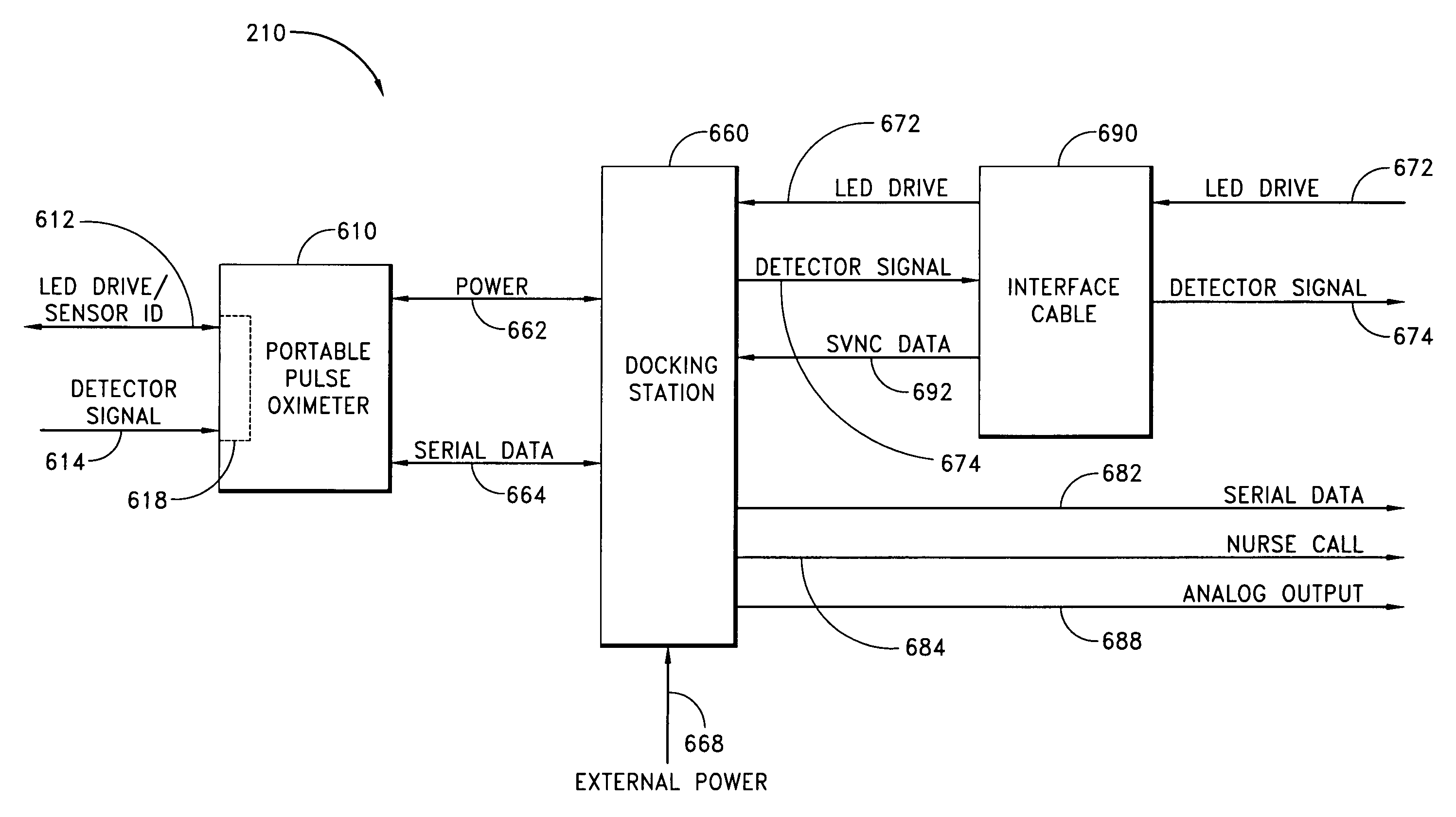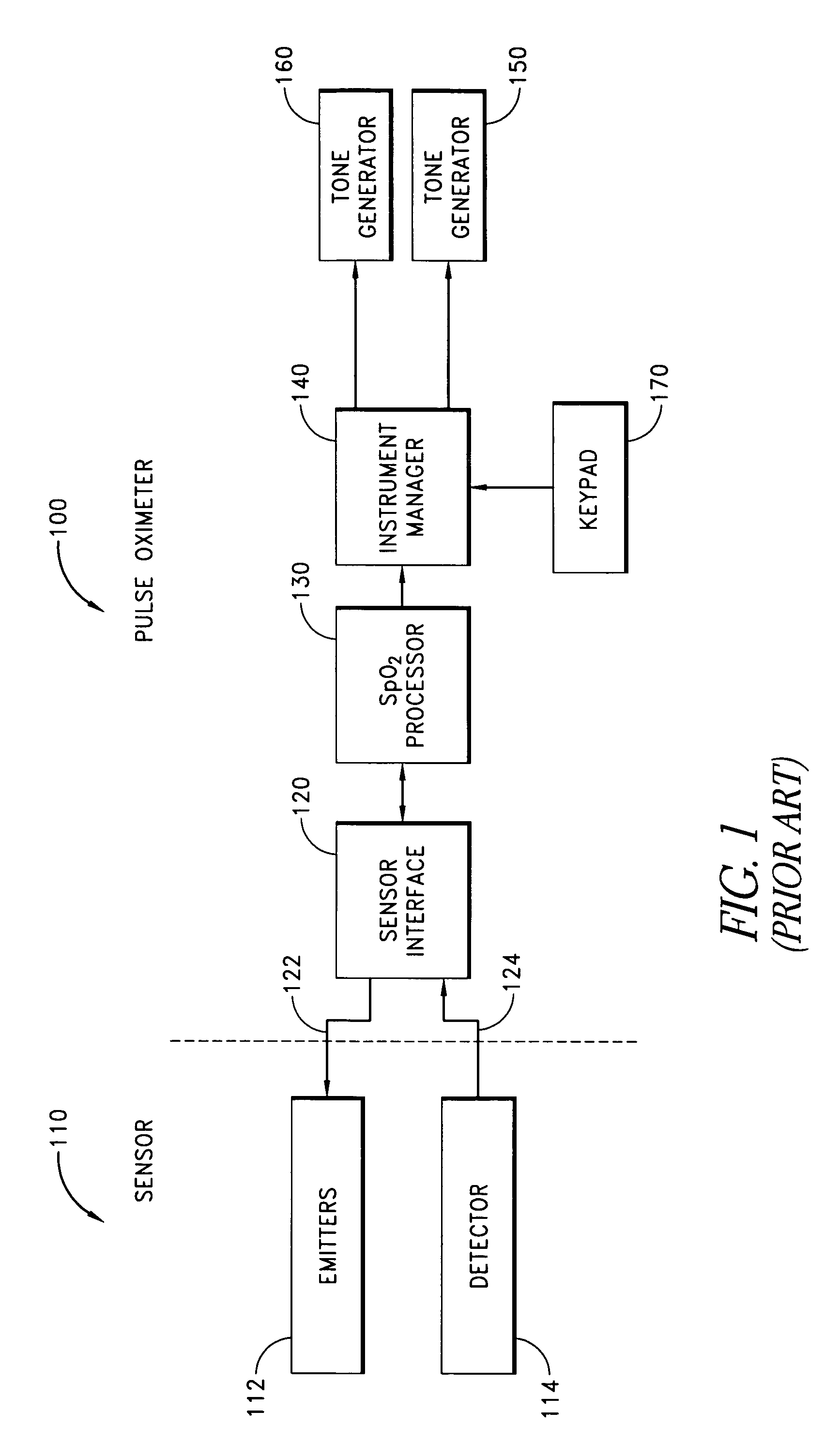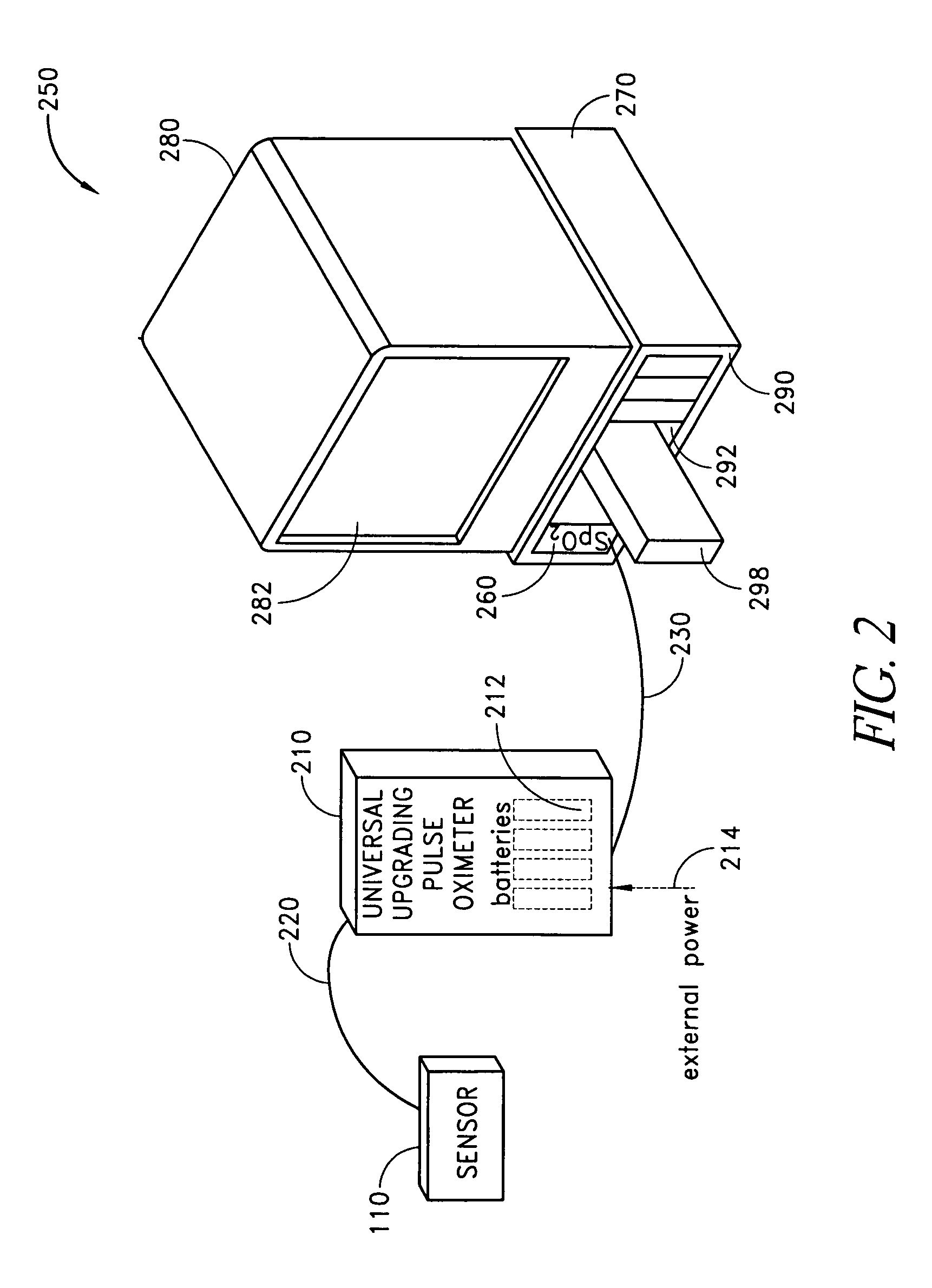Dual-mode pulse oximeter
a pulse oximeter and dual-mode technology, applied in the field of dual-mode pulse oximeters, can solve problems such as brain damage and death, and achieve the effect of easy removal
- Summary
- Abstract
- Description
- Claims
- Application Information
AI Technical Summary
Benefits of technology
Problems solved by technology
Method used
Image
Examples
Embodiment Construction
[0042]FIG. 2 depicts the use of a Universal / Upgrading Pulse Oximeter (“UPO”) 210 to perform patient monitoring. A pulse oximetry sensor 110 is attached to a patient (not illustrated) and provides the UPO 210 with a modulated red and IR photo-plethysmograph signal through a patient cable 220. It should be understood that while a pulse oximeter is illustrated, the present invention has applicability to other physiological parameter such as ECG, blood pressure, respiration, etc. The UPO 210 computes the patient's oxygen saturation and pulse rate from the sensor signal and, optionally, displays the patient's oxygen status. The UPO 210 may incorporate an internal power source 212, such as common alkaline batteries or a rechargeable power source. The UPO 210 may also utilize an external power source 214, such as standard 110V AC coupled with an external step-down transformer and an internal or external AC-to-DC converter.
[0043]In addition to providing pulse oximetry measurements, the UPO ...
PUM
 Login to View More
Login to View More Abstract
Description
Claims
Application Information
 Login to View More
Login to View More - R&D
- Intellectual Property
- Life Sciences
- Materials
- Tech Scout
- Unparalleled Data Quality
- Higher Quality Content
- 60% Fewer Hallucinations
Browse by: Latest US Patents, China's latest patents, Technical Efficacy Thesaurus, Application Domain, Technology Topic, Popular Technical Reports.
© 2025 PatSnap. All rights reserved.Legal|Privacy policy|Modern Slavery Act Transparency Statement|Sitemap|About US| Contact US: help@patsnap.com



